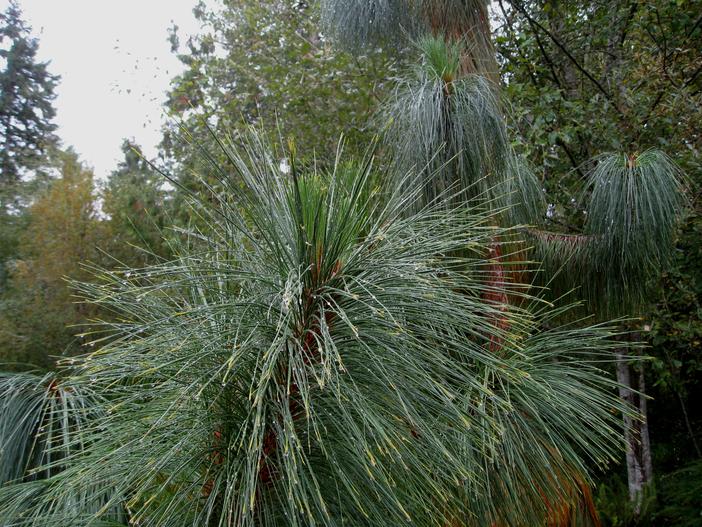Yunnan Pine
(Pinus yunnanensis)
Yunnan Pine (Pinus yunnanensis)
/
/

brewbooks
CC BY-SA 2.0
Image By:
brewbooks
Recorded By:
Copyright:
CC BY-SA 2.0
Copyright Notice:
Photo by: brewbooks | License Type: CC BY-SA 2.0 | License URL: https://creativecommons.org/licenses/by-sa/2.0 | Uploader: Matanya | Publisher: Wikipedia Commons















Estimated Native Range
Summary
Pinus yunnanensis, commonly known as Yunnan Pine, is an evergreen tree native to the mountainous regions of southwestern China, specifically the provinces of Yunnan, Sichuan, Guizhou, and Guangxi. It is typically found in open woodlands and forest edges at elevations of 1,200 to 3,000 meters. Yunnan Pine can grow to a height of 25-45 meters with a trunk diameter of up to 1 meter. It has a straight trunk with a broadly conical crown in young trees, becoming more irregular with age. The bark is thick and scaly, dark gray to black. The needles are long, slender, and a bright green color, arranged in bundles of three. This species produces cones that are long, slender, and pendulous, with a light brown color when mature.
Yunnan Pine is valued for its ornamental features, including its attractive form and foliage. It is used in reforestation projects and as a windbreak in its native region. In cultivation, it requires full sun and can tolerate a range of soil types, provided they are well-drained. It is relatively drought-tolerant once established but does best with regular moisture. Yunnan Pine is not commonly grown in gardens outside of its native range but can be a striking specimen tree where space allows. Potential problems include pine wilt disease and bark beetles, which can be significant pests. It is also susceptible to air pollution and may not be suitable for urban environments with poor air quality.CC BY-SA 4.0
Yunnan Pine is valued for its ornamental features, including its attractive form and foliage. It is used in reforestation projects and as a windbreak in its native region. In cultivation, it requires full sun and can tolerate a range of soil types, provided they are well-drained. It is relatively drought-tolerant once established but does best with regular moisture. Yunnan Pine is not commonly grown in gardens outside of its native range but can be a striking specimen tree where space allows. Potential problems include pine wilt disease and bark beetles, which can be significant pests. It is also susceptible to air pollution and may not be suitable for urban environments with poor air quality.CC BY-SA 4.0
Plant Description
- Plant Type: Tree
- Height: 60-100 feet
- Width: 20-40 feet
- Growth Rate: Moderate
- Flower Color: N/A
- Flowering Season: Non-Flowering
- Leaf Retention: Evergreen
Growth Requirements
- Sun: Full Sun, Part Shade
- Water: Medium
- Drainage: Medium
Common Uses
Low Maintenance
Natural Habitat
Open woodlands and forest edges at elevations of 1,200 to 3,000 meters in southwestern China
Other Names
Common Names: Yun Nan Song, Chinese Pine, Yunnanski Bor
Scientific Names: , Pinus yunnanensis, Pinus densata var. pygmaea,
GBIF Accepted Name: